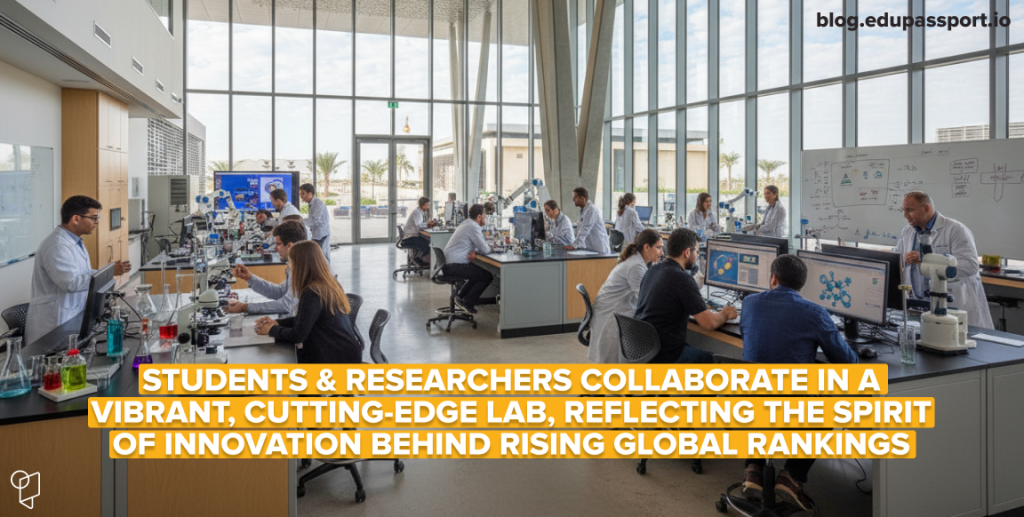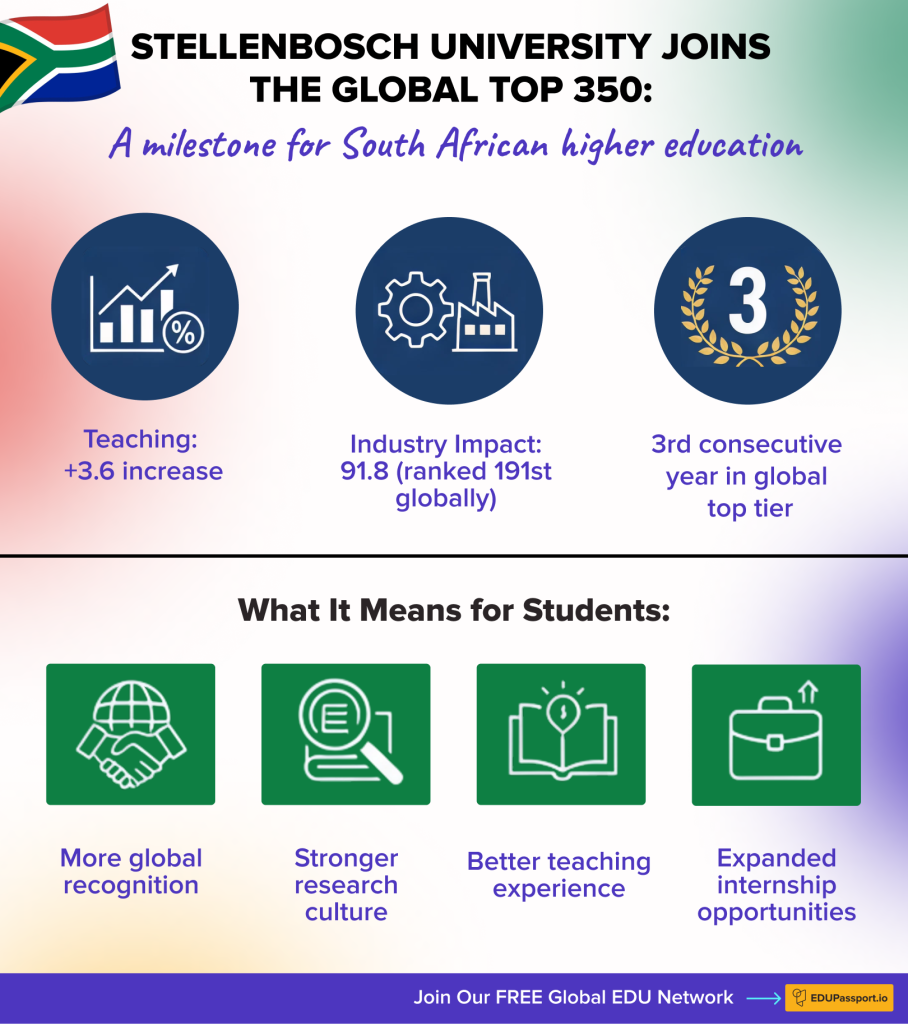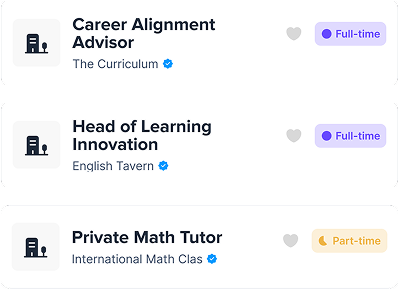Stellenbosch University has reached a major milestone, securing a place among the top 350 universities worldwide in the Times Higher Education (THE) World University Rankings 2026. For South Africa, this marks another step forward in its higher education journey. For international students, it’s an important reminder that world-class learning is no longer confined to a few regions.
The results, first reported by Future SA, confirm that Stellenbosch University (SU) has maintained its upward trajectory for a third consecutive year. This consistency reflects long-term investment in research, teaching, and global partnerships, the three pillars that shape the university’s growing international reputation.
What’s Behind Stellenbosch University’s Rise
The Stellenbosch University world rankings 2026 results are based on performance across five indicators: Teaching, Research Environment, Research Quality, International Outlook, and Industry Income.
Each area tells a story of progress. The university’s Teaching score rose from 31.2 to 34.8, showing stronger academic environments, better support systems, and modernized facilities that enhance learning.
Meanwhile, its Industry Impact score jumped from 89.5 to 91.8, placing Stellenbosch 191st globally in that category and the highest in South Africa. This score reflects how research translates into real-world applications through partnerships with companies and innovation centers.
Growth in Research Quality and International Outlook further highlights how Stellenbosch is positioning itself as a serious global player. Faculty are collaborating across borders, students are joining exchange programs, and research output is earning global citations.
Why This Ranking Matters for Global Learners
For students exploring universities abroad, Stellenbosch’s new position brings practical benefits. It shows that academic excellence, diversity, and affordability can align in one destination.
Here’s why this matters:
- Global Recognition Equals Opportunity. A higher ranking often attracts new partnerships, scholarships, and job pathways for graduates.
- Improved Teaching and Learning. Rising scores in teaching indicate better mentorship, updated resources, and student-focused growth.
- Strong Industry Collaboration. The university’s success in connecting research with real-world challenges means students can learn through applied projects and internships.
- Africa’s Higher Ed Renaissance. Stellenbosch’s success mirrors a wider transformation. More African institutions are investing in quality, innovation, and inclusivity that creates a new wave of globally relevant universities.
These trends show that studying in South Africa isn’t just a cultural adventure. It’s a strategic career move.

EDU Passport’s Take: A New Era for Global Education
At EDU Passport, we see this as more than a ranking. It’s proof that the global education landscape is evolving rapidly.
Top-tier universities now exist far beyond traditional destinations like the UK or US. Students who broaden their search to regions like Africa or Southeast Asia often find programs that blend quality with cultural depth and innovation.
Stellenbosch University’s rise highlights what happens when a university invests in people, partnerships, and progress. It’s a blueprint for how higher education can be both globally competitive and locally impactful.
So, as you explore your study options, think bigger. Don’t just chase rankings. Look for institutions that align with your goals and offer a dynamic learning experience. And if you’re not sure where to start, EDU Passport is your global guide.






















